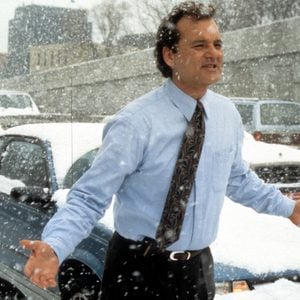10 Famous Groundhogs Besides Punxsutawney Phil
Updated: Jan. 30, 2024
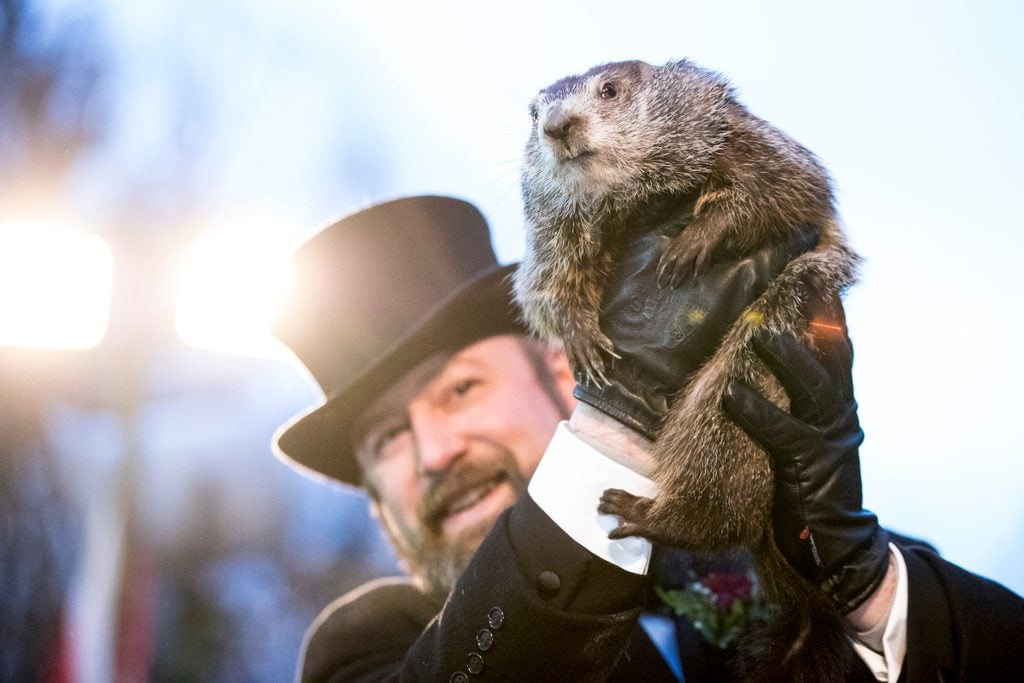
Will spring come early this year? These famous groundhogs will let us know!
Maybe he just has a great publicist, but for far too long Punxsutawney Phil, the groundhog who predicts whether we’re in for six more weeks of wintry weather on Feb. 2 (Groundhog Day), has really stolen the spotlight from his brethren. Believe it or not, there are a slew of other famous groundhogs who have the same gig in their hometowns and have made quite an impression on their communities.
So without further adieu, read on to discover the other groundhog names that everyone will be looking out for on Groundhog Day. It’ll be fun finding out if these furry little critters see their shadows … or not. Plus, you’ll learn a few facts about groundhogs too!
Get Reader’s Digest’s Read Up newsletter for more holiday tips, fun facts, humor, cleaning, travel and tech all week long.
Dunkirk Dave
Dunkirk Dave holds the auspicious title of the world’s “second-longest prognosticating groundhog,” reports his official website. In 2023, the New York–based animal predicted early spring weather. Bob Will, Dunkirk Dave’s handler, attributes his furry friend’s popularity to an article that appeared in the Dunkirk Evening Observer. “I have used a groundhog for over 58 years to predict the coming of spring weather,” Will says on the website. “Dunkirk Dave is the second-longest predicting groundhog. Also the only animal honored on the calendar is the groundhog.” Will is a state-licensed wildlife rehabilitator, which allows him to legally care for “sick, injured and orphaned wildlife.”
Buckeye Chuck
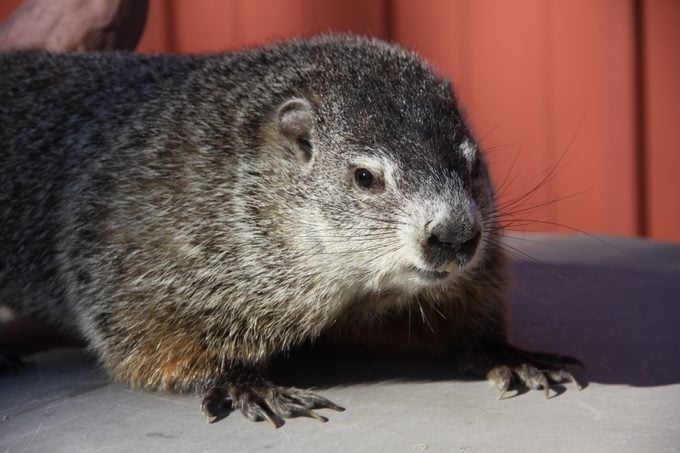
Good ol’ Buckeye Chuck hails from Marion, Ohio, and is his state’s answer to Punxsutawney Phil. How did he score the name? It dates back to the 1970s. “As a joke on the air, Charlie [Evers, radio host] says, ‘What are we going to name our groundhog for Groundhog Day?'” said Scott Shawver, Mansfield and Marion senior vice president for programming at iHeartMedia, in an interview with Ohio Magazine. “We had a contest.” Buckeye Chuck was the winning moniker, and he has visited the WMRN radio station every year since, on Feb. 2. There’s a celebration that coincides with his arrival, and revelers come from states beyond Ohio to join in on the fun. Of course, there have been a number of Buckeye Chucks over the last four decades, given that groundhogs have a life span of about 14 years in captivity, and about half that in the wild.
General Beauregard Lee
When you’re down South and need a prediction about the arrival of spring, look to General Beauregard Lee, a resident of Dauset Trails Nature Center in Jackson, Georgia. According to his official Twitter account (yep, he has one), GBL enjoys naps, digging tunnels and eating hash browns. In 2023, he also predicted an early spring in Georgia. General Beauregard Lee originally lived on Yellow River Game Ranch, but he was relocated to the nature center in 2018 when the ranch abruptly closed up shop.
Staten Island Chuck
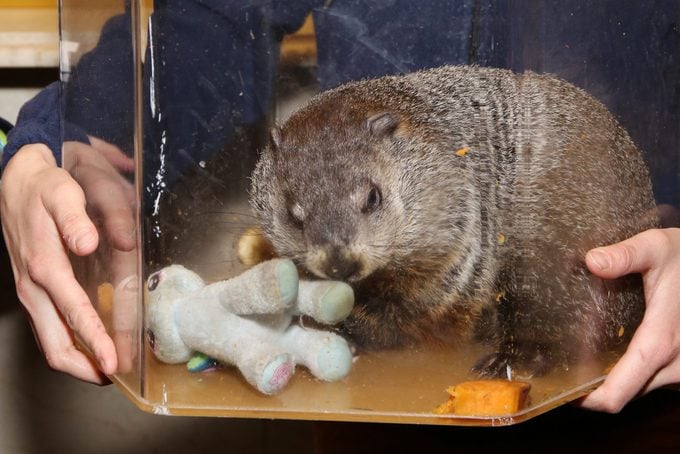
Chuck appears to be one of the popular groundhog names, although New York’s Staten Island Chuck also has a more formal moniker for when he’s feeling fancy: Charles C. Hogg. According to Spectrum News NY 1, Staten Island Chuck has a pretty sweet accuracy rate, at 80% (as of 2023). Last year he predicted an early spring, much to the delight of New Yorkers who were ready to say buh-bye to the cold and bring on warmer weather. For those unfamiliar with the tradition, if a groundhog spots his shadow on Feb. 2 and goes back into hibernation, folklore says that winter will last an additional six weeks. If he doesn’t see his shadow and hangs out to socialize, spring is near.
Chuckles IX
In 2017, Connecticut found itself the beneficiary of a new groundhog—Chuckles IX. Earlier that year, Chuckles VIII (we see a theme here) passed away, leaving an opening for a new weather prognosticator in the state. Chuckles IX was brought to the Lutz Children’s Museum from his original home to fill the role. “He was loved here, but we discovered that he had some pretty remarkable meteorological skills,” Ranger Russ Miller, director of Meigs Point Nature Center in Madison, Connecticut, told the Hartford Courant. “We knew he’d be happiest if we allowed him to move up to Manchester, where he could realize his dream of becoming a famous weather-predicting marmot.”
Chattanooga Chuck
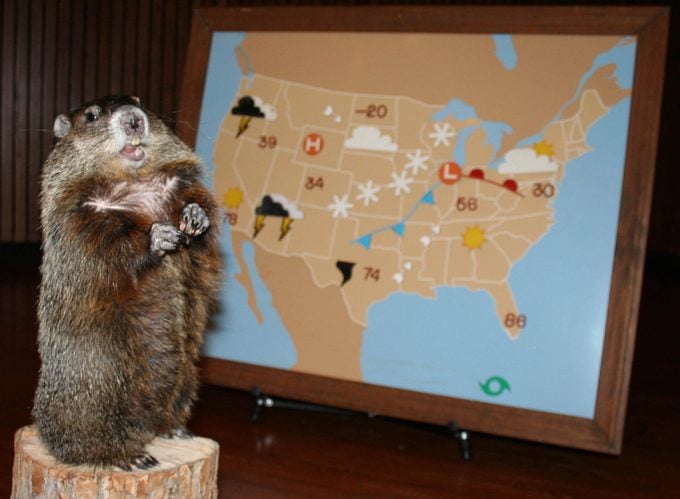
Yes, folks, we have another Chuck! This famous groundhog hails from Chattanooga, Tennessee—hence, the name. Sadly, the Chattanooga Chuck who made 2019’s prediction passed away in November. The Tennessee Aquarium, where he resided, posted a sweet message about the endearing groundhog after his passing: “Literally millions of people came to know Chattanooga Chuck through his special Groundhog Day prognostications. Chuck made his first seasonal forecast at the Aquarium in February of 2010 and rose to fame as one of the Weather Channel’s ‘Top Groundhogs to Watch’ and appeared live on CNN as well as numerous other media appearances.” That’s a pretty impressive resume.
Thistle the Whistlepig
Move over, Buckeye Chuck—there’s another famous groundhog in town. Thistle the Whistlepig joined Ohio’s Cleveland Museum of Natural History back in 2015 and is enjoying a bit of fame in her own right. According to the museum’s website, she became part of the family at just 5 weeks old, born as the runt in a litter of five. Since then, Thistle has made a name for herself, partaking in CMNH’s annual Groundhog Day festivities since she arrived. But why is her name Thistle? According to Scientific American, when these animals are surprised or sense danger, they let out a high-pitched whistle to warn other groundhogs.
Sir Walter Wally
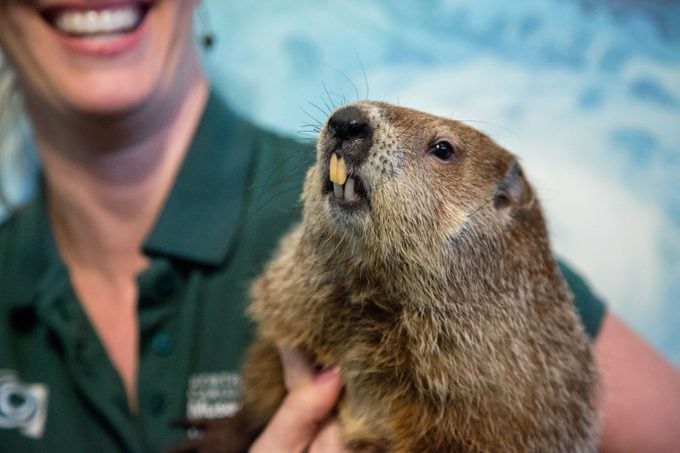
This famous groundhog retired in 2023, with his last prediction being six more weeks of winter in 2022. However, in 2019, the little guy also predicted six more weeks of winter, which wasn’t entirely accurate. But, hey, everyone has an off-year once in a while. As an added groundhog fact: Groundhogs aren’t the only animals thought to predict the weather. The North Carolina State Climate Office cites woolly worms, geese and crickets as forecasters too. While that’s all well and good, we’ll stick with Groundhog Day. Woolly Worm Day just doesn’t have the same appeal.
Pierre C. Shadeaux
With a groundhog name befitting a Cajun groundhog, Pierre C. Shadeaux is the premier weather prognosticator in Louisiana. However, they see things a little differently at the Zoo of Acadiana, where Pierre lives. As reported by the area’s local News 15: “If Pierre sees his shadow, that means we’re in for a short spring, so we’ll have to face the heat of summer quickly. But if Pierre doesn’t see his shadow, we’ll have six more weeks of mild temperatures.” It should also be noted that this little fella isn’t actually a groundhog. He’s a nutria, which is a semi-aquatic rodent, but he’s still treated as the star of Louisiana’s Cajun Groundhog Day.
Grover the Groundhog
A famous groundhog named Grover is giving Punxsutawney Phil a run for his money in the state of Pennsylvania. Over in Schuylkill County’s Pine Grove, Grover has been known to make a different weather prediction than famous Phil, says the Citizen-Standard. The event starring Grover began back in 2006, originated by Pine Grove Grundsau Lodge No. 5. Today, the Sweet Arrow Lake Conservation Association has taken over hosting duties, which feature not only Grover the Groundhog but also his pal Sweet Arrow Sue. “We celebrated a few Groundhog Days with just Grover, and then Sue showed up,” said Denise Donmoyer, president of the Sweet Arrow Lake Conservation Association, in an interview with The Citizens’ Voice. “And we’re really not sure where Sue came from, but they struck up a romance and it just blossomed from there.” Since 2017, Grover and Sweet Arrow Sue have predicted eight long winters and nine early springs.
Sources:
- Dunkirk Dave: “Groundhog Day 2023”
- SILive.com: “Groundhog Day 2024 accuracy rate: Will Staten Island Chuck’s forecast streak continue?”
- Tufts Now: “Five Things You Didn’t Know About Groundhogs”
- Ohio Magazine: “Buckeye Chuck, Ohio’s Own Weather-Predicting Groundhog”
- Hartford Courant: “New Connecticut Groundhog Named As Chuckles IX Arrives At The Lutz Children’s Museum In Manchester”
- Countdown to Groundhog Day: “Grover the Groundhog and Sweet Arrow Sue”
- The Citizens’ Voice: “Getting to Know Grover the Groundhog and Sweet Arrow Sue”
- Cleveland Museum of Natural History: “Thistle the whistlepig joins the Museum family”
